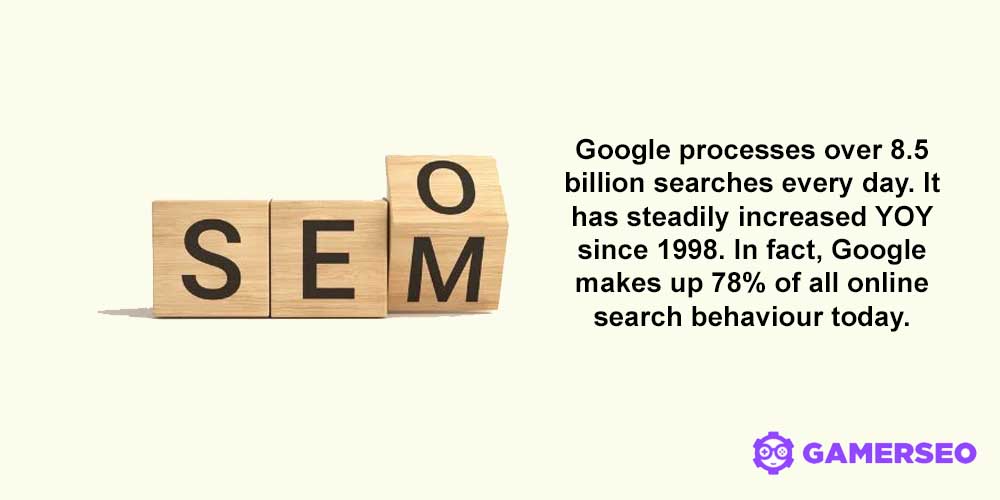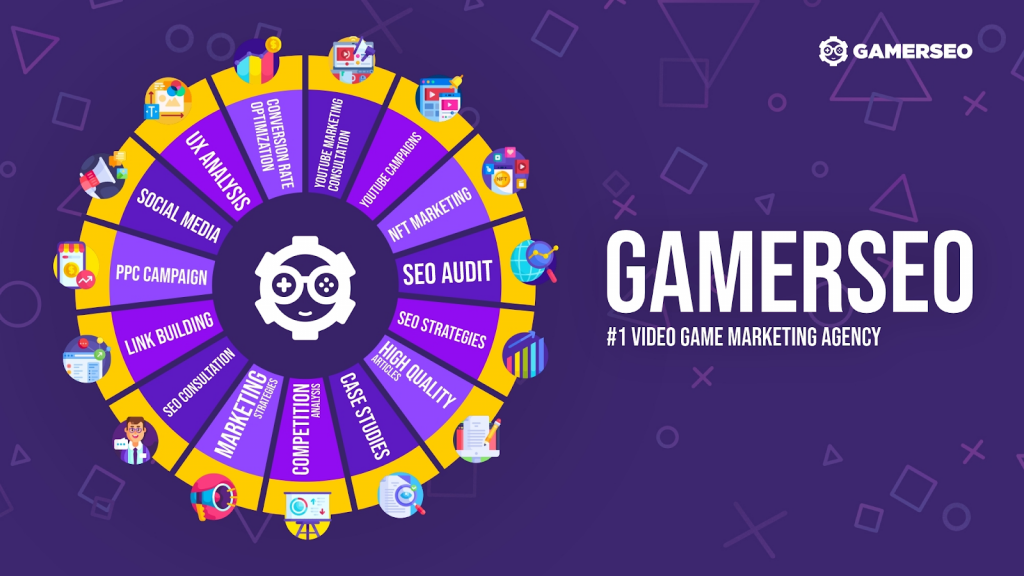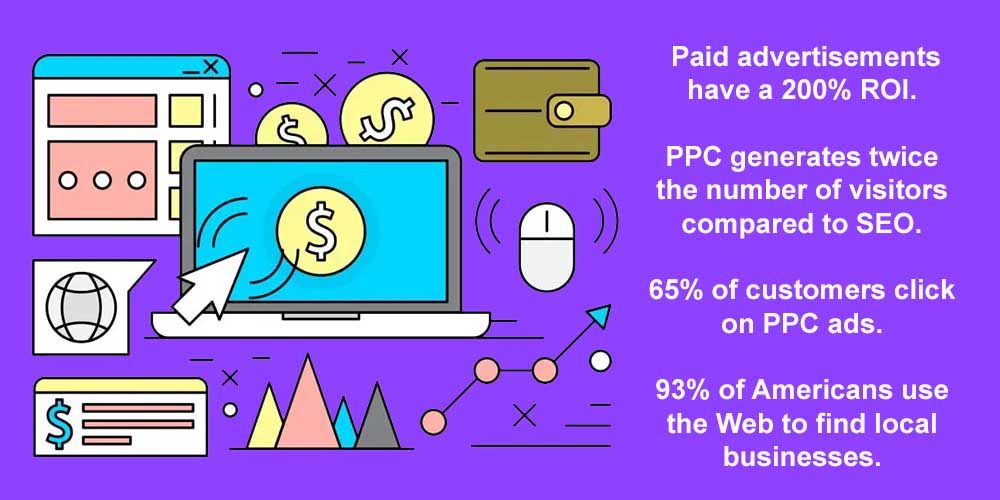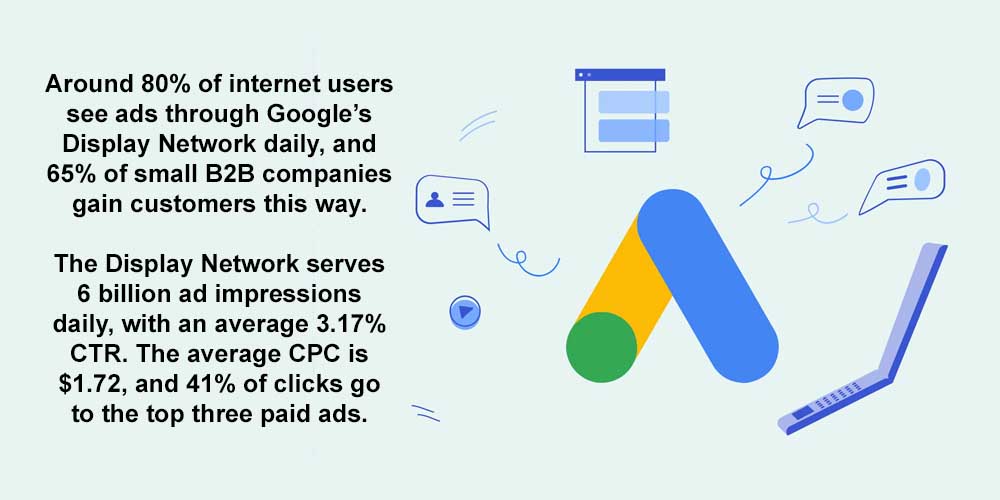There are several strategies marketers can use to improve results in SERPs and increase the number of visitors to their websites and conversions. Some of them include the usage of keywords, the creation of high-quality content, the refinement of search engine reputation management, and the curation of both internal and external links. But just a few strategies work as well as SEM PPC when leveraging budget and purchasing intents.
In PPC, an advertiser creates a banner or display ad and pays for each user engagement or click. The amount depends on the many factors we mention further in this blog post. Then, if you want to drive traffic to your website, stay with us to learn everything about this practice.
What Is SEM PPC?

Search Engine Marketing – SEM – is a general approach for improving visibility and brand awareness in Google and other search engines.
On the other hand, in PPC, an advertiser pays search engines and social media to display their ads on their desired search results page and stories.
In a nutshell, PPC – pay-per-click – is one of the most important constituents of SEM.
SEM includes PPC but is not restricted to only this way of advertising. It features many popular digital marketing terms and techniques, such as SEO, link-building, influencer marketing, PPC, and more. Wrapping up, SEM is both paid and unpaid, including PPC and organic traffic (SEO).
What Is the Difference Between SEO – SEM?

Search Engine Marketing (SEM) encompasses a range of strategies designed to optimize the ranking of web pages on search engines. This integral part of digital marketing includes both organic and paid approaches. By leveraging paid advertisements on targeted platforms, SEM enables websites to secure prominent placements on the first pages of search engine results.
SEM attempts to attract people ready to purchase a product or look for specific information to make a purchase decision.
SEO stands for Search Engine Optimization and seeks to gain visibility and awareness through a series of measures considering organic traffic rather than paid methods. SEO is more about quantity and quality of content, so search engines reward it by positioning it at the top of search engine results pages, or SERPs.
Regarding SEO and PPC, the first is a long-term strategy designed to work over time. In other words, it doesn’t work overnight and brings a steady source of traffic as the months go by. On the other hand, PPC brings quick results, but when the campaign’s over, the traffic will most likely drop.
What Is PPC?

PPC stands for Pay-per-Click, and it corresponds to a digital marketing strategy involving marketers paying any time a user clicks a PPC ad allocated in SERPs or media platforms.
In this sense, PPC advertising is about using a mix of SEO – keywords and optimization – and paying methods to display PPC ads to specific audiences to encourage them to click the ad.
Marketers set a specific budget when using this online advertising method. Such a budget considers the cost-per-click and cost-per-conversion when evaluating whether the PPC campaigns were successful.
What Is the Difference Between SEM and PPC?
SEM is a comprehensive strategy that encompasses both organic and paid approaches, making it a broader marketing framework. Thus, PPC (Pay-Per-Click) can be categorized as a subset of SEM, specifically falling under paid strategies. Therefore, it can be stated that PPC is a subcategory of SEM.
Furthermore, a particular form of PPC known as search ads focuses on paying to have a specific web page appear as the top result in search engine results pages (SERPs). This makes search ads a key strategy in search marketing.
Still, PPC considers relevant main and long-tail keywords to create ads since they will appear to a targeted audience.
SEM is a wider plan integrating multiple approaches, such as SEO, guest blogging, paid search marketing, pay-per-click advertising, influencer marketing, and more. All these approaches intend to engage users through search engines.
How to Leverage PPC Potential?
PPC advertising integrates multiple edges leading your strategy to achieve success. It means you need to conduct keyword research to find main and long-tail keywords that work for your niche and target audience and then create the best ad copy for your purposes.
You should also periodically measure results by checking KPIs, such as cost-per-acquisition and cost-per-click. The best approach in this case is using tools like Google Analytics and ClickUp.

The proper approach for taking advantage of digital marketing is working hand in hand with an agency specializing in PPC campaigns and other marketing strategies. In this sense, GamerSEO can manage the proper PPC advertising strategies for your business by considering all the aspects that make your brand and product unique.
By collaborating with GamerSEO, you gain access to a comprehensive SEM strategy that combines the power of PPC advertising, search engine optimization, competitor analysis, and remarketing campaigns. Our goal is to optimize every aspect of your online presence, drive more traffic, and ultimately help you achieve your business objectives.
Why Is PPC Pay per Click Important?

PPC is a crucial strategy in the Internet marketing approach since it encourages navigators to purchase a product or service directly, without significant effort.
Normally, pay-per-click ads lead users to your landing page, where product and brand data is displayed. Besides, landing pages also contain a bottom to complete a purchase, facilitating conversions quickly.
PPC is also crucial as it showcases relevant data, products, or services to specific groups of people, differentiated for demographics, interests, geographics, and behaviors. Moreover, PPC ads appear on many massive and trending platforms, which means ads are displayed for thousands of users daily.
PPC Best Practices
PPC marketing strategy involves many factors, but you should consider the following practices for leveraging the full potential of pay-per-click advertising.
- Set a realistic budget and clarify your target audience. Budget is one of the essential features of every PPC campaign since it establishes the limits of what you can do. We recommend you focus on specific actions such as promoting a time-limited discount or users signing up for a newsletter.
- Find a good balance between automated and non-automated bidding. PPC mostly uses responsive search to quickly and efficiently find the best combination of titles, descriptions, images, and more to create and showcase the proper paid search ads and other advertisements for users. This process is automatic and works very well, but do not set it and forget it. It’s better if you constantly check how platforms combine integral parts – titles, copies, etcetera – to adjust paid advertising ads when they are not performing properly.
Platforms You Should Consider for Your PPC Campaign

Beyond Google search, there are several platforms where you can insert your advertisements to generate visitors to your website. Here are the most important ones.
Google Ads
Google ads is likely the primary PPC platform users worldwide utilize for search queries when intending to find information. Since Google is one of the major search engines, PPC marketers bid on this advertising platform to display their ads, offering time-limited offers, listed products, and more. However, its unmatched popularity means the fees for its paid ads are higher.
Google processes over 90,000 inquiries per second, so competition is fierce. The chance of your paid ads appearing to your target audience will depend on optimization and value.
Microsoft Ads
Microsoft Ads, previously known as Bing Ads, allows you to create and display digital ads on the Microsoft Advertising Network and the Microsoft Bing search engine. Your targeted ads will be displayed in multiple apps and websites partnered with Microsoft.
Like in Google Ads, advertisers pay to create their own search, product, video, shopping, and display ads and then display them on the advertising platforms. Ads are showcased to targeted groups according to their specific profiles and can be purchased on a pay-per-click basis.
TikTok
Nowadays, TikTok is one of the largest social media platforms, with over 1 billion active users. Thus, businesses use this media to promote their products and service and reach thousands of potential customers. TikTok ads have unique features that boost creativity and visibility by including music and TikTok challenges and trends. Some advertisements that TikTok offers are the following:
- In-feed ads. Full-screen ads appearing in the main feed of the application.
- Brand takeover ads. Full-screen ads spawning when users enter the app.
- Branded effect ads. Brand effects you can use to create your ad formats.
- Hashtag challenge ads. Ads encourage users to participate in branded hashtag challenges by submitting their own videos.
Youtube TrueView Ads
Any digital marketer can leverage Youtube online advertising to promote their products and services on the platform. Youtube TrueView ads can take different forms:
- Skippable video ads. Full-screen ads users can skip after a certain number of seconds. The most common last five seconds.
- Non-skippable video ads. Full-screen ads users cannot skip before viewing the entire video. They can be up to fifteen seconds.
- Brief sidebars. These correspond to ads in the platform’s sidebar, where you can see the playlist.
- Bumper ads. Short non-skippable ads that last five seconds or shorter in duration.
- Sponsored cards. Small cards on the screen containing extra data about the advertised product.
- Overlay ads. Semi-transparent ads appearing at the bottom of the video.
Meta Ads
A successful PPC strategy should include Instagram and Facebook ads since they are integrated into users’ feeds and walls and look similar to regular posts. Pay-per-click marketing considers Instagram ads to present their publications to targeted individuals in a specific area.
- Photo ads. Single-image ads promoting a specific product.
- Video ads. Short-video ads promoting a specific product or service.
- Carousel ads. Multiple pictures or videos in a single ad containing a headline and description.
- Stories ads. Ads in the Stories section that disappear after twenty-four hours.
Regarding Facebook, purchasing ads and others spawn in the right-hand column of the desktop, stories, and news feeds. Some types of ads are the following:
- Image and video ads. These correspond to regular ads containing a single image or video, a headline, and a CTA button.
- Carousel ads. Multiple images or videos in a single ad containing a headline and description.
- Slideshow ads. Video ads using several static images.
- Instant Experience ads. Ads that businesses use to create immersive experiences within the Facebook app.
The Bottom Line
SEO, SEM, PPC, and other online marketing approaches provide unique ways of increasing visitors and prospects to your website and landing pages. SEM and PPC include enhancing website traffic through paid initiatives, contrary to the organic search of SEO.
In this context, PPC marketing emerges as an effective approach for marketers who want to quickly position their websites in the search engine rankings and encourage people to click the ads on social media and specialized websites.
Contact us to boost your current strategies or create a totally new PPC campaign! We will develop your PPC work by searching specific keywords and positioning ads in the proper spots.

A PPC specialist who started with organic social media. For several years, the core of his activities are:- Google Ads, Microsoft Ads, Meta Ads, TikTok Ads, Twitter Ads, Linkedin Ads. He has led campaigns with a global reach, e.g. for FootballTeam, G2A, ETOTO, as well as many smaller campaigns in the sports, construction and financial industries. Has full focus on ROAS. Privately, a fan of football, history of wars and Star Wars.

